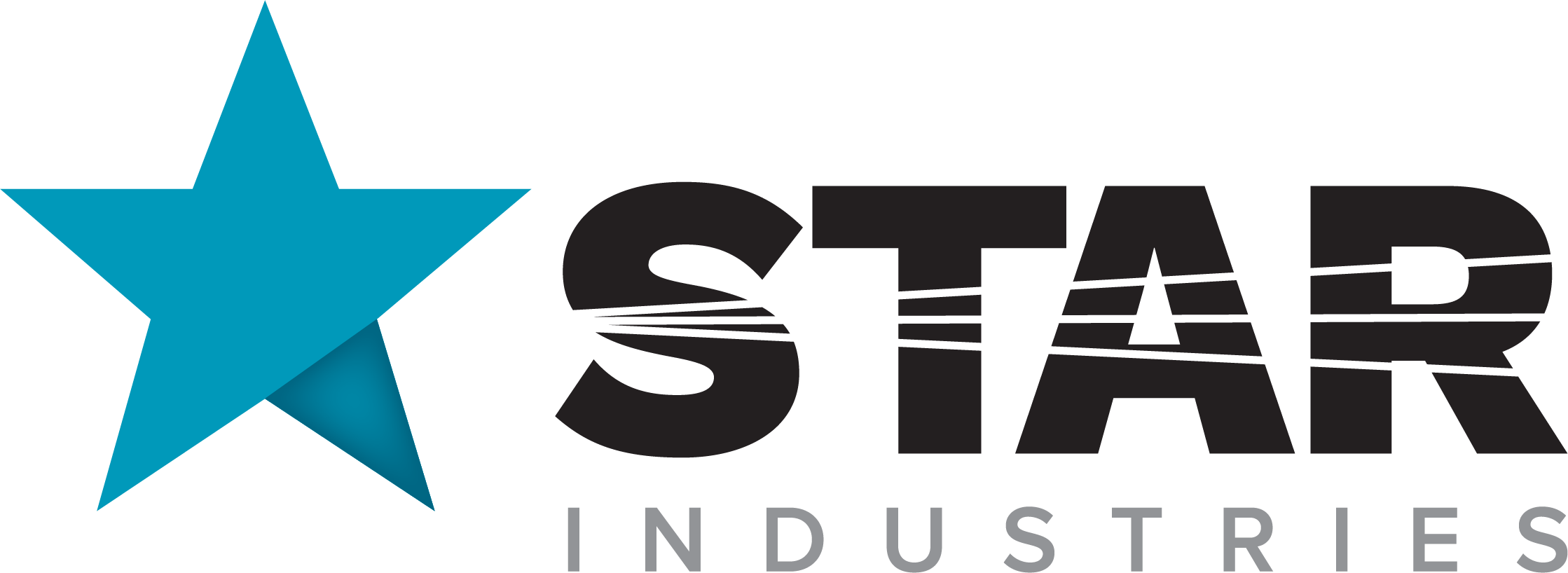A Complete Guide to Skid-Steer Attachments
Gone are the days when skid-steers were confined to largely bucketing material from one place to another.
The introduction of diverse attachments such as trash hoppers, trenchers, breakers, augers, among others, has redefined the capabilities of these indispensable machines. From heavy-duty grapples to skid steer forks and frames, the array of available attachments is revolutionizing the way companies approach material handling.
Maximizing Productivity with Smart Skid-steer Attachment Solutions
The strategic use of these attachments is not just transforming skid steers into multi-functional powerhouses but are also paving the way for businesses to achieve more with less. With the ability to perform a wider variety of tasks, companies can now rely on their skid-steer for multiple functions, reducing the need for additional machinery.
In the following sections, we will delve into the most prevalent skid steer attachments, categorized by their utility and application.
Skid-Steer Buckets
Long gone are the days of a standard skid-steer bucket. Today you can get a bucket attachment for all types of jobs. Here are just some of them.
Root Grapple Bucket
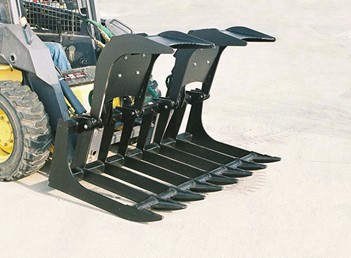
This type of skid-steer bucket is popular in landscaping and site preparation. The bottom separated grapple tines let dirt sift out when loading large rocks and trash making it the perfect attachment for debris clean up. Choose a grapple bucket where the tines curve upward to help prevent the tines catching utility lines or cables during clean ups.
Grapple Bucket
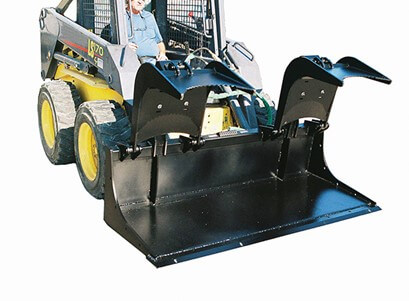
A skid-steer grapple bucket is similar to the root grapple minus the separated tines. Like the root grapple it is great for moving bulky, hard-to-handle materials. A good grapple bucket will have independent operating cylinders that adjust for uneven loads and an extra wide bucket opening to maximize the loose trash load.
Skeleton Bucket
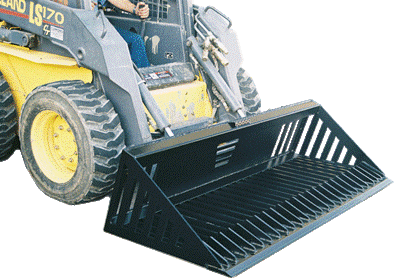
A skid-steer skeleton bucket combines the best features of a traditional bucket and root grapple attachment. Like a traditional skid-steer bucket, a skeleton bucket can pick up large volumes of material. However, the tines allow clean dirt and material to filter out, leaving only the larger debris in the bucket.
This makes this attachment invaluable when needing to clean up large rocks and site debris without scraping away the soil.
Concrete Placement Bucket
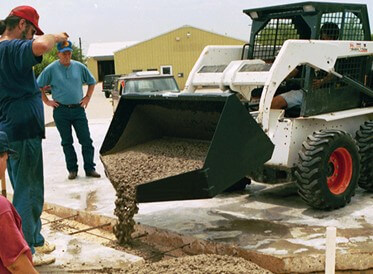
A skid-steer concrete placement bucket is an affordable solution for placing concrete in hard-to-reach areas not easily accessible by the concrete truck. With the ability to hold up ¾ cuyd of concrete (depending on the skid-steer specs) and no moving parts to break or clog up, it is a must have attachment on any job site pour.
Skid-Steer Breakers, Trenchers and Augers
Breaker
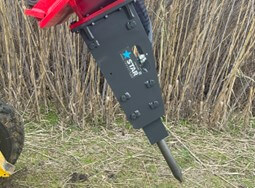
Look no further than a skid-steer breaker when you need to crack, break and pulverize large slabs of concrete and other materials into manageable and easily transportable pieces. This makes it the must-have attachment for demolition work, mining, quarrying and a heap of other construction work.
Our recommendation is to choose a skid-steer breaker that uses a low-pressure nitrogen charge to cushion every blow for reduced wear and tear and a more comfortable operator experience with less fatigue.
Trencher
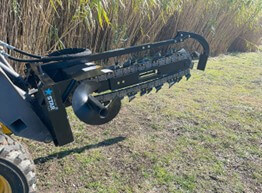
This is the must-have skid-steer attachment when you need to dig a trench fast. When selecting a trencher, look for a model that comes standard with a full rock guard for added protection and trenching blades available in different styles such dirt, rock, frost, and rock and frost, to increase the attachment’s versatility.
Auger
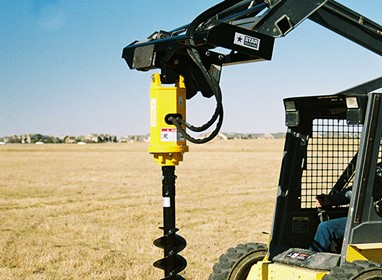
Augers have long been a popular skid-steer attachment and for good reason—no one loves manually digging holes! It’s important to buy an auger capable of doing the job and lasting the distance. The auger should be constructed from heavy-duty, high-grade materials to give them the strength needed to handle any drilling job.
Skid-steer augers are available in different styles to suit different drilling jobs. Single flight augers are ideal for most soil types. The best ones can even handle heavy clay and frozen ground. Rock augers are designed for the most difficult drilling conditions such as solid rock and concrete. T-post augers are great for T-Post” holes in dirt, clay, compacted soils, frozen ground, fractured rock, solid rock and concrete up to a depth of 30 inches.
Consider buying a complete auger assembly kit which includes everything you need: mounting frame, hose kits, drives and auger drill. This will save you money and ensure all parts are compatible and work together perfectly.
Skid-Steer Forks and Frames
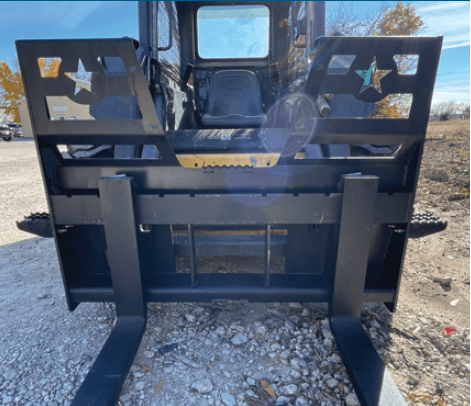
It’s negligent to have a discussion about skid-steer attachments without mentioning forks and frames. This attachment is the perfect lifting solution without having to buy a forklift. Skid-steer forks and frames are available in both Quick-Tach and ITA-style forks.
Look for fork attachments that are forged from one piece of steel, then heat treated and tempered for maximum strength and load capacity. The very best attachments are able to handle up to 5,5000 lbs. capacity.
Things to consider before buying a skid-steer attachment.
Is the skid-steer attachment engineered to standard?
Manufacturers of skid-steer attachments must ensure they meet the applicable guidelines as defined in American National Standards Institute B56.1-1969 and that operator use is without risk to health and safety as is reasonably practical when used in accordance with the supplied guidelines.
This duty includes conducting analysis, testing or an examination and providing specific information about the attachment.
If you ignore the uses, load and capacity ratings of your equipment and attachments, or circumvent ANSI and OSHA safety standards by using home-made, non-certified machinery attachments, you’re endangering your equipment, contracts, workers and your entire job site.
Is the skid-steer attachment plated and includes operator safety instructions?
The skid-steer attachment needs to be plated to manufacturer specifications including capacity and safe operation. Operator safety instructions need to be visible and easily accessible via the manual holder.
Is the attachment built for safety and to last?
Ensure the skid-steer attachment has safety and longevity in mind. The attachment should come standard with safety features such as retaining pins behind the heel of each fork that can be secured with hairpins or cotter pins; safety chains that can be wrapped around the carriage and pull spring-loaded pins. Check with the dealer or manufacturer that all items supplied are properly rated for use with skid-steer attachment.
How the attachment is manufactured is another important consideration For example, if it’s a bucket, ask the attachment seller if it’s manufactured with a heavy-duty steel shell with continuous welded seams inside or out that add greater strength and attachment life.
Does it fit your brand of skid-steer and specifications?
Make sure the attachment has been tested and rated for your skid-steer brand, model and attachment method. The attachment should not exceed the capabilities of your machine as it may lead to operator injury or damage to the skid-steer.
What warranty and support are on offer?
Check with the seller the manufacturer warranty and support. If it’s not five-years, why not? What support does the dealer or manufacturer offer post sale? Are they located in the USA? Can you speak to a real person if you have a question or a problem? Do they carry spare parts for your attachment?
Get more out of your skid-steer with Star Industries’ selection of heavy-duty skid-steer attachments and accessories for the landscaping, construction and fleet rental industries.
Star Industries attachments — and attachment storage solutions — are precision-engineered and manufactured for the rigors of the warehousing and construction industries.
This makes them a popular choice for owners and operators of fleets of forklifts who are seeking to maximize the ROI on their valuable construction, building and earthmoving equipment.
Star Industries forklift attachments are super tough, USA made and available in both ITA and Shaft Mounted attachment options. Star Industries even offers an industry-leading five-year guarantee on most of its forklift attachments.
Visit Star Industries to learn more.
